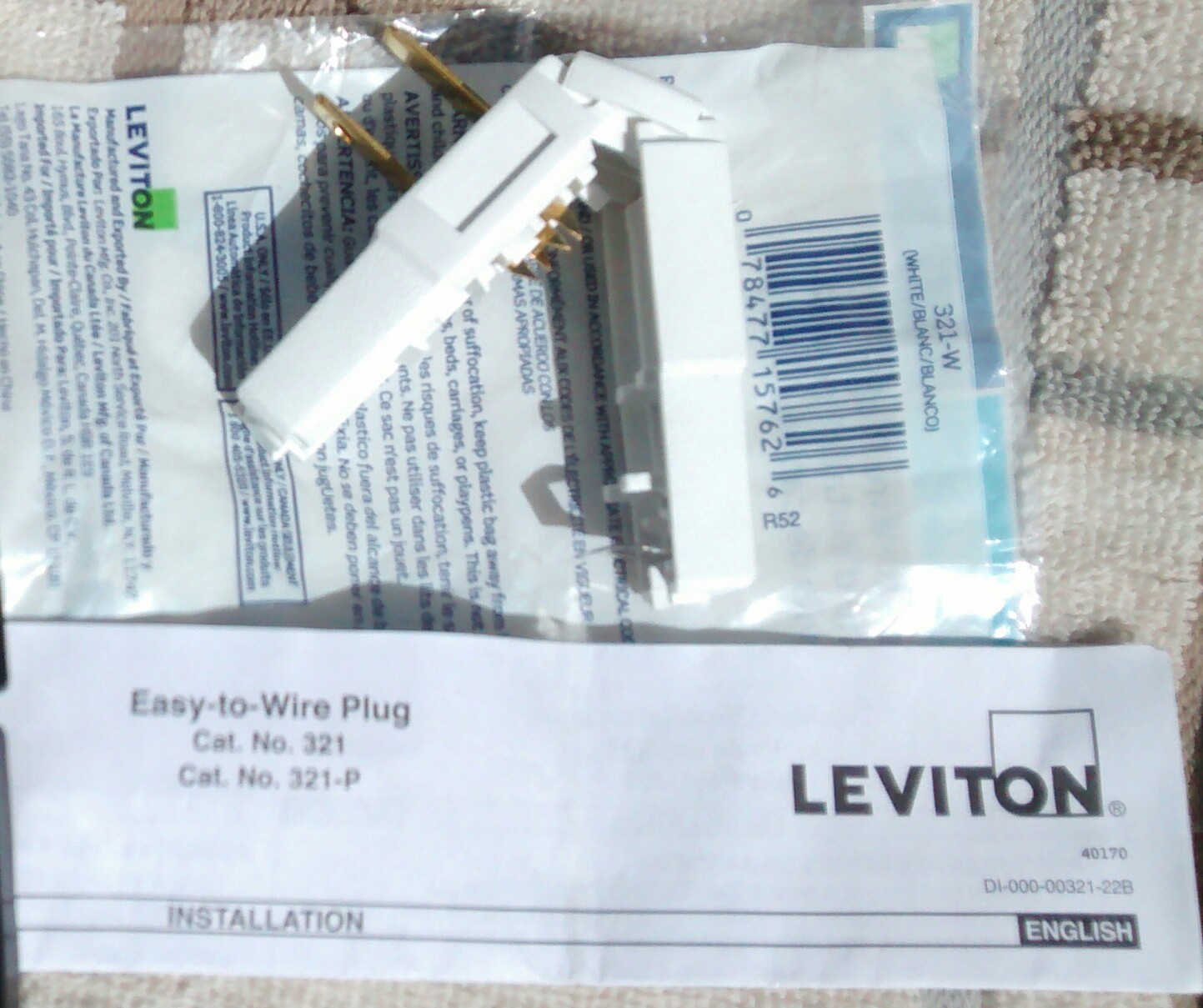I do exercise, but when I’m reading couch potato style, I like to have my LED lights with a switch close by. So I make up extension cords with a plug, switch and outlet socket. I also like to put the on/off switch where the AC power comes into the adapter because there will be no transformer or circuit wasting power 24/7 even when the light is not being used.
One problem that seems to afflict every power strip is the lack of outlets, often caused by large “wall wart” adapters taking up more than one outlet. That’s where this plug may help. It’s 1 inch or 25mm wide and the cord comes out the side so it may fit where other plugs won’t fit.
I list some of the other advantages below.
It comes with one page of instructions as shown in the photo.
The one piece plastic body comes in white, brown. The body snaps together so you can open it with your fingernail, and squeeze it closed until it snaps shut.
The 18 AWG, 2 conductor lamp cord is cut squarely and laid in the place for the wires. The wires do not have to be stripped because the prongs pierce the insulation. The two body halves clamp the wires and hold the cord in place. The body is closed until it snaps shut, and that’s about all there is to it.
The two prong plugs come in polarized and non-polarized versions. Polarized has the neutral prong larger than the hot prong. This power plug is suitable for most AC adapters, which usually have only two power prongs and no ground pin is needed.
I used a small inline switch typically used in the cord of swag lamps. It has a small knurled wheel that is turned, alternating between on and off. These have been in use for decades, are inexpensive and do an adequate job.
I’ve also used the remote control power switches such as the ones made by Stanley. These typically come in a kit with 3 or more switched outlets and a single remote fob with buttons for each switch. Problem is that I soon run out of them and the frequency bands are limited – you don’t want to turn on multiple outlets with the same button at the same time. One other consideration is that the remote switch may waste as much power as the device you are trying to save power. The remote switch must have a receiver, which may only take milliamps of AC current, but it has to be on 24/7, and wastes that power all of the time it’s on. Since that problem is eliminated with manual switches, I try to do my part in conserving energy. The most efficient way of saving energy is to not use it.
